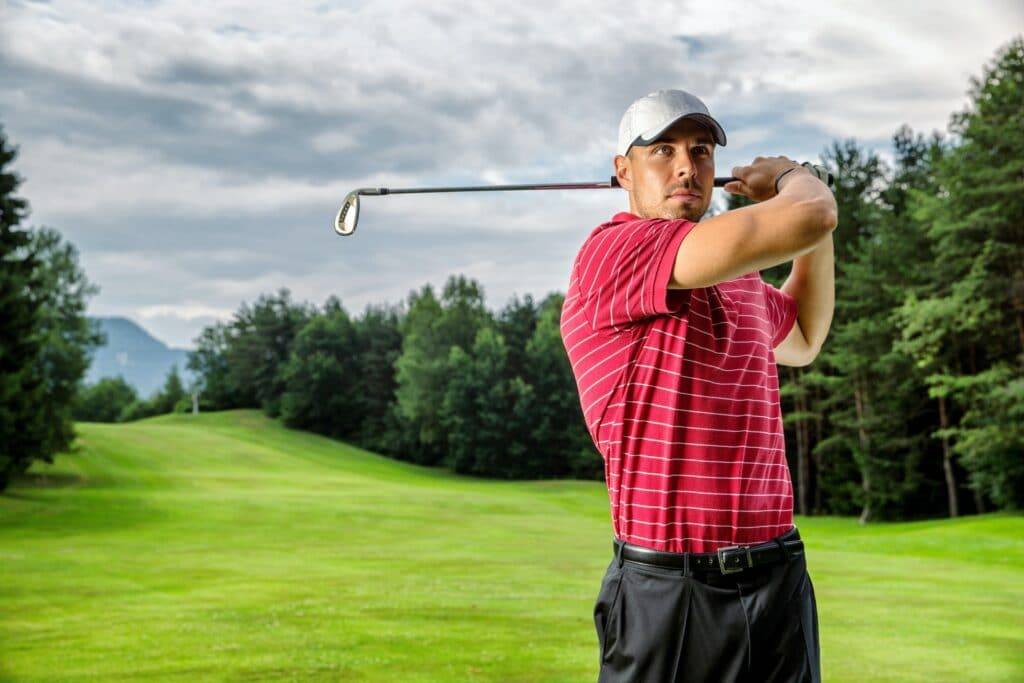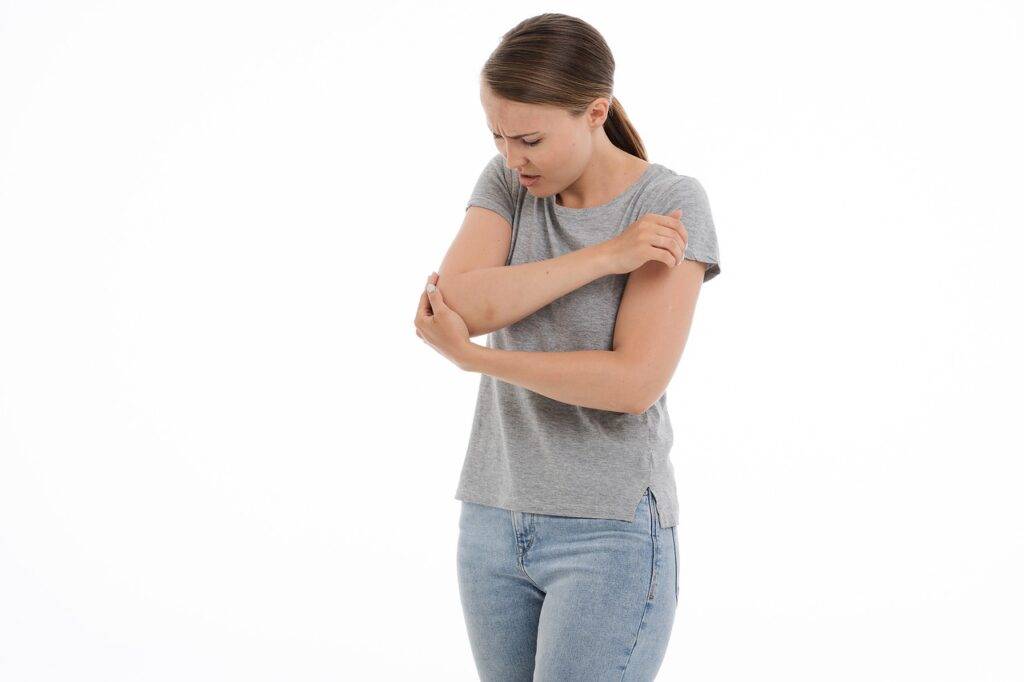Golfer’s Elbow (Medial Epicondylitis) Pain Management in Knoxville, TN

Golfer’s elbow vs tennis elbow
Although golfer’s elbow is similar to tennis elbow, golfer’s elbow causes pain on the inside on the elbow while tennis elbow causes pain on the outside of the elbow. Golfer’s elbow is less common than tennis elbow, accounting for 10-20% of all cases.Golfer’s elbow causes
As previously mentioned, golfer’s elbow is caused by repetitive overuse of the elbow which causes pain and inflammation in the medial common flexor tendon of the elbow. Golfer’s elbow is most common in racket sports, throwing sports, weight training, and repetitive occupational movements. Patients who work in carpentry, plumbing, and construction are most likely to have golfer’s elbow. Although golfer’s elbow is commonly associated with sports, 90% of all cases are not sport related. Golfer’s elbow can occur after an acute trauma, although this is less common.Golfer’s elbow symptoms
Symptoms of Golfer’s elbow include:- Pain
- Stiffness
- Weakness
- Numbness or tingling
Diagnosis
As always, diagnosis of medial epicondylitis starts with a visit to the doctor. This can be a primary can physician, orthopedist, or sports medicine specialist. The doctor will do a thorough physical exam including the medial epicondylitis and Tinel’s test. The medial epicondylitis test starts with the doctor placing one hand on the common flexor tendon and supinating while actively extending the elbow and wrist. A positive test is when the patient experiences pain along the medial elbow during the examination. The Tinel’s test is done by tapping over the ulnar nerve near the wrist and can be done to test for ulnar neuropathy. Although diagnosis of golfer’s elbow is done clinically, imaging can be done to rule out any underlying bone deformity or other soft tissue injuries. X-rays and CT scans are useful to rule out any fracture or underlying arthritis. Ultrasounds are an easy way to look at the underlying muscle and tendon, but an MRI is used to ultimately diagnose medial epicondylitis. In most cases, imaging will be normal, but 20-30% of all patients will demonstrate periostitis (inflammation of the periosteum), or calcific tendinopathy (calcium buildup in the tendon).How to treat golfer’s elbow
As with most musculoskeletal conditions, treatment starts conservatively with ice, rest, and NSAIDs (non-steroidal anti-inflammatory drugs). This includes stopping the actively that caused the condition. This is not always possible, depending on a patient’s occupation or a professional athlete. Anti-inflammatories are the best medications for this type of condition. Acetaminophen can be used but opioids are not recommended or indicated. Physical therapy is usually combined with ice, rest, and NSAIDs. The focus of PT is to increase strength in the joint and decrease pain and inflammation the tendon. Dry needling, electrical stimulation, deep heat, and ultrasound therapy can be combined with PT to help decrease pain. Splinting is a common treatment for golfer’s elbow. A nighttime wrist, cock up splint may provide some relief. A counterforce brace on the affected arm may reduce muscle and tendon strain as it heals. Patients can also use kinesiology taping if needed. Corticosteroid injections can be used but have not been effective long term. Platelet-rich plasma injections have been shown to reduce pain more effectively than corticosteroid injections. Plasma injections involve drawing a small amount of the patient’s blood and injecting a concentrated number of platelets and other anti-inflammatories into the elbow. Plasma injection is still being studied for its effectiveness. Surgery is only offered in cases that do not resolve with conservative methods and is usually not needed. Only 2.8% of all patients will need surgical intervention to treat golfer’s elbow. Surgery for medial epicondylitis involves releasing the common flexor tendon and debridement of pathologic tissue. There is also a new approach call TENEX that involves removing scar tissue in the region of the tendon pain using ultrasound. This technique is minimally invasive.
Complications
There aren’t many complications of golfer’s elbow. The most common is persistent pain. Patients may also experience ulnar neuropathy, ulnar collateral ligament injury, carpal tunnel syndrome, lateral epicondylitis, or rotator cuff tendinitis. If this condition goes untreated, it can leave the patient with permanent damage and limit range of motion in the elbow. Patients can also have permanent weakness in their grip.Risk Factors
Despite occupation and sports, there are some other risk factors that increase a patient’s chance of developing golfer’s elbow. These include:- Women
- Adults between 45-64
- Obesity
- Smokers
- Diabetics
How to prevent golfer’s elbow
Golfer’s elbow can be prevented in most cases. A good diet and exercise program will help keep patients healthy and reduce the risk of obesity and diabetes and quit smoking. Stretching before any exercise and using the right equipment can help prevent any injury. Look into strengthening exercises for the forearms. This can help strengthen the tendon and reduce injury. Always lift properly and know when to rest. When there is pain, take a break. Pain is the body’s way of saying something is wrong.Treatment for Golfer’s Elbow in Knoxville
If you’re experiencing long-term pain and need to learn how to manage it in your everyday life, you’ll want to seek the expertise of a qualified Knoxville golfer’s elbow physician. If you’re looking for a Knoxville pain clinic, contact Igor Smelyansky, MD of Omega Pain Management. Phone (865) 337-5137.References:
Golfer’s Elbow http://www.mayoclinic.org/diseases-conditions/golfers-elbow/diagnosis-treatment/drc-20372872?p=1 (2022)
Golfer’s Elbow (Medial Epicondylitis) http://my.clevelandclinic.org/health/diseases/21711-golfers-elbow-medial-epicondylitis (2022)
Keil J, Kaiser K. Golfer’s Elbow [Updated 2022 Jun 27]. IN: StatPearls[Internet]. Treasure Island (FL) : StatPearls Publishing; 2022 Jan: Available from http://www.ncbi.ncm.nih.gov/books/NBK519000/
